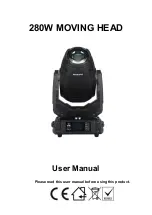
ULTRAPATCH PRO PX2000
2
Welcome to BEHRINGER!
Thank you very much for expressing your confidence in BEHRINGER products by purchasing the ULTRAPATCH PRO
PX2000.
A patchbay allows to patch the audio signals of most components in your studio from a central point and send them
to other units, which makes your entire cabling better structured and is indispensable for professional work. If you
want to use your studio as effectively as possible then it is preferable to use a complete patchbay wiring scheme, but
even less sophisticated patchbay solutions will benefit smaller studio configurations.
1. PATCHBAY CONFIGURATION
The majority of commercially available patchbays include two rows with 24 phone jacks each in a 19" 1 HU rack panel.
On the rear, either a corresponding number of phone jacks or contacts for soldering signal leads can be found. Each
group of four of these phone jacks forms one module. The configuration of some patchbays can be changed by
inserting jumpers or turning individual modules.
With the BEHRINGER ULTRAPATCH PRO PX2000 you own an easy-to-use 24-patchbay offering phone jacks throughout,
which can be operated in four different modes simply by setting a switch on the upper panel (example: module 17):
1.1 Parallel
In this mode, all terminals of one module are interconnected. This configuration doesnt make sense at first glance
but is used to split up and send
one
audio signal (e.g. aux send) to several destinations (e.g. effects devices).
1.2 Half-normalled
In this configuration, the contacts of the two jacks on the rear are interconnected. When you insert a plug into the upper
front jack, the signal routed through the rear path is not interrupted. Only when the lower front jack is used will the rear-
panel route be split up, so that the two upper and the two lower phone jacks are connected to one another. This
configuration is called input break and is used mainly for insert paths. So you can easily patch the signal from a
mixing console channel at the patchbay without interrupting the signal flow in the channel.
1.3 Normalled
Here, and in contrast to the half-normalled setup, the signal route of the rear phone jacks is interrupted when you
insert a plug both into the upper and lower front jacks.
1.4 Open
This mode is used to connect devices such as sound modules or CD players having no inputs of their own. This
saves space, as you can route the left and right outputs to one module (left - top; right - bottom) or patch two devices
to one module (top and bottom). Effects devices and 2-tracks can be configured this way, so the inputs and outputs
are positioned on top of each other.
Basically, the inputs are routed to the bottom and the outputs to the top rear-wall connectors. Avoid routing digital
signals over a patchbay as the pulse signal used for the transmission of such signals causes heavy interference in
analog signals. Additionally, normal patchbays change the impedance of the digital cable route, which causes
interference in the digital path. Use the BEHRINGER ULTRAMATCH SRC2496 specifically designed for this and other
digital signal-related functions.
Microphone inputs operate at a level several orders of magnitude lower than line levels (+4 dBu or -10 dBV). There-
fore, they should never be routed via a patchbay. In any case, patching in a field with 48 V DC (phantom power) flying






















